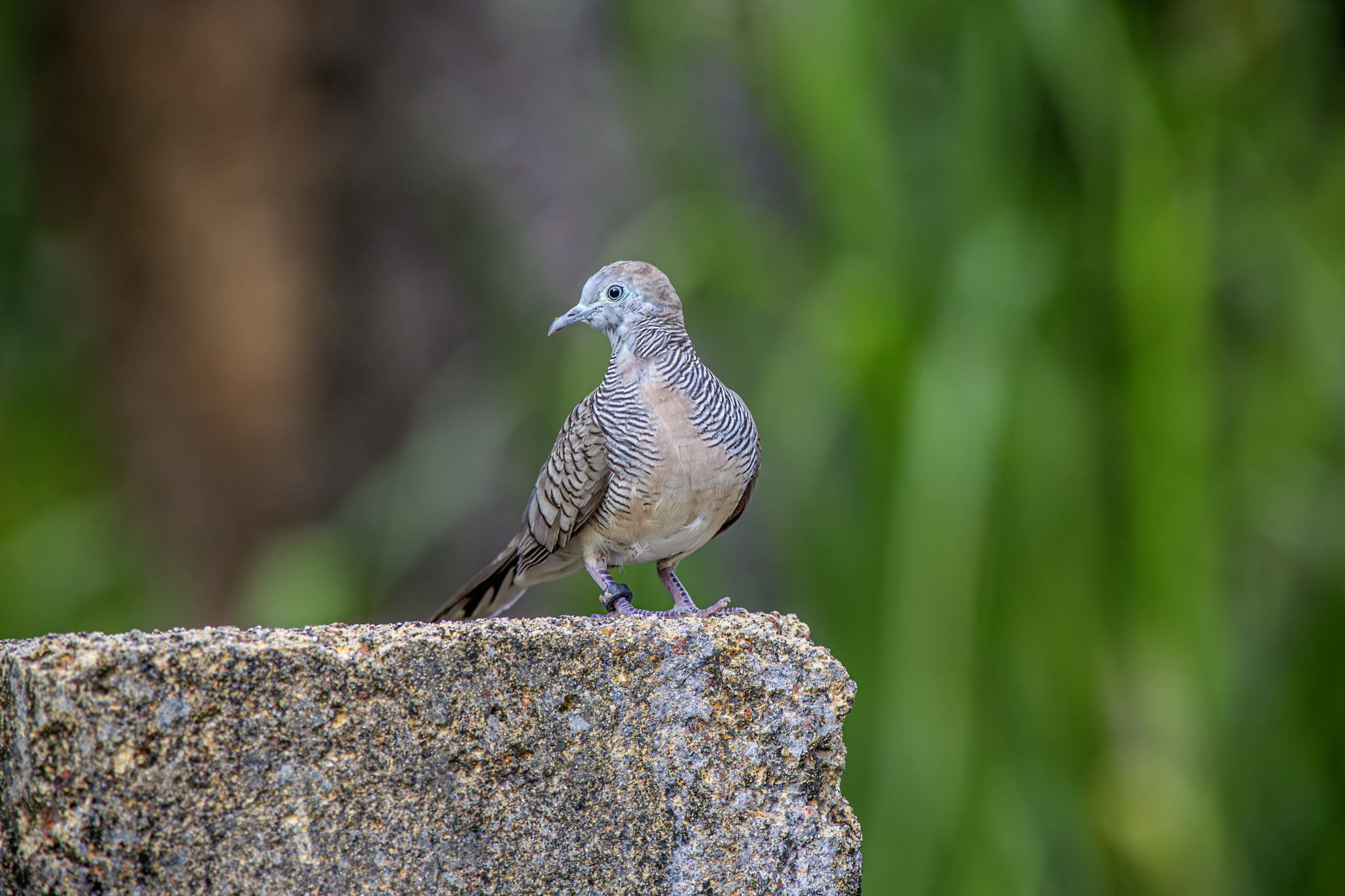The Zebra Dove (Geopelia striata) is a small and widespread species of dove native to Southeast Asia and nearby regions. Here are some key features and characteristics of the Zebra Dove:
- Appearance: Zebra Doves have a distinctive appearance with a pattern of bold black and white stripes on their breast and neck, resembling a zebra hence their name. Their overall plumage is primarily light brown or grayish-brown, providing camouflage in their natural habitat. They have red-orange beaks and legs, and their eyes are surrounded by a ring of bare skin, which can range from pale blue to pinkish-red depending on the bird’s mood.
- Size: Zebra Doves are small birds, measuring about 20 to 23 centimeters (8 to 9 inches) in length, including their tail. They typically weigh around 40 to 60 grams (1.4 to 2.1 ounces).
- Habitat: Zebra Doves inhabit a variety of habitats, including open woodlands, scrublands, grasslands, gardens, parks, and urban areas. They are commonly found in lowland areas and are well-adapted to human-altered environments.
- Distribution: The Zebra Dove is native to Southeast Asia, including countries such as Indonesia, Malaysia, Thailand, Myanmar, the Philippines, and parts of Australia. It has also been introduced to other regions, including Hawaii, where it has established feral populations.
- Diet: Zebra Doves are primarily seed-eaters, feeding on a variety of seeds and grains found on the ground. They also eat small insects, fruits, and other plant matter. In urban areas, they may feed on spilled birdseed or scraps of food left by humans.
- Behavior: Zebra Doves are often seen foraging on the ground in pairs or small groups. They are relatively tame and approachable, especially in urban areas where they have become accustomed to human presence. Their calls are soft and melodious cooing sounds, which are often heard in the early morning and evening hours.
- Breeding: Zebra Doves form monogamous pairs during the breeding season. They build simple nests using twigs, grasses, and leaves, typically in trees, shrubs, or other elevated locations. Both parents share incubation duties and care for the young chicks until they fledge.
Overall, the Zebra Dove is a charming and adaptable bird species appreciated for its distinctive appearance, pleasant cooing calls, and ability to thrive in diverse habitats, including urban environments. It is a familiar sight to many people living in its native range and has become a popular aviary bird in captivity.
Visited 1,023 times, 8 visit(s) today
Views: 1321
Subscribe to the newsletter:
